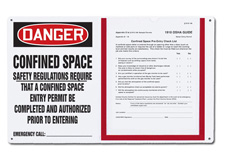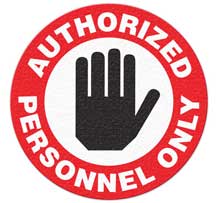| The Home page of ILPI's Safety Data Sheet (SDS) Resource, the leader in SDS information since 1995! | |
| The history and philosophy behind this resource. | |
| A curated collection of books and reference materials concerning Safety Data Sheets and closely related topics. | |
| Paste your plain text SDS into the SDS-Demystifier, and it will be converted into a hypertext-enriched document with links to detailed explanations of each key term. | |
| An extensive list of frequently asked questions about Safety Data Sheets including regulations, content, compliance, and more. | |
| A humorous take on Safety Data Sheet jargon. Fill in the blanks on our entry form to generate a personalized Unsafety Data Sheet to share with your coworkers. | |
| Since 1995, we've maintained this massive curated list of the best places to find Safety Data Sheets on the Internet. | |
| You are here! Way more than a glossary, this hypertext-enhanced resource covers hundreds of SDS-related terms and expert knowledge. Each entry includes both the SDS relevance and links to additional authoritative resources. | |
| Archived results of Safety Data Sheet related polls taken by some of our millions of site visitors | |
| The OSHA regulations behind SDS regulations, including the inspection guidelines and over 400 official interpretations letters under the Hazard Communication Standard | |
| Commercial suppliers of SDS authoring and management software as well as cloud compliance services. | |
| Commercial companies that will create SDS's for your specific needs as well as SDS translation companies. |

Safety signs, banners, and scoreboards? Get yours at Safety Emporium!
Definition
Administrative controls (or work practice controls) are changes in work procedures such as written safety policies, rules, supervision, schedules, and training with the goal of reducing the duration, frequency, and severity of exposure to hazardous chemicals or situations.
Additional Info
Those who work with hazardous chemicals in the workplace should already be familiar with the administrative controls required under 29 CFR 1910.1200, the OSHA Hazard Communication Standard. The HazCom standard requires that employers provide information and training about chemical hazards in the workplace. Other OSHA standards address environmental and medical surveillance such as work place inspections, equipment preventive maintenance, and exposure monitoring. In addition, laboratory workers have written policies and procedures (a "chemical hygiene plan") that details safe work practices under 29 CFR 1910.1450, the Laboratory Standard.
Although administrative controls can (and should) always be used to control employee exposure, they are prone to human error and can not be relied upon to reduce exposure all the time. Additional control mechanisms such as substitution of less hazardous materials/procedures, engineering controls and personal protective equipment (PPE) may be required to address employee exposure to the hazard(s).
Some specific examples of administrative controls include:
- Performing maintenance operations that involve toxic substances at night when the usual production staff is not present.
- Rotating workers through various job assignments so that they do not develop repetitive motion injuries.
- Prohibiting workers from working with ionizing radiation once they have reached a predetermined level of exposure.
- Requiring workers in hot environments to take breaks in cool rest areas and providing fluids for rehydration.
- Prohibiting worker access to areas involving hazards such as lasers, energized electrical equipment, or excessive noise.
- Proper housekeeping. Reducing clutter reduces the chances for an accident and minimizes the effects if an accident does occur.
Recognize that administrative, engineering, and other types of controls (including PPE) are not mutually exclusive. Employers may need to use multiple types of controls to prevent employee overexposure.
Books Available
NOTE: We may collect a share of sales or other compensation from the links in the following list:
- "Occupational Ergonomics: Engineering and Administrative Controls (Principles and Applications in Engineering)", Hardcover, 680 pages, 2003. Estimated price $167.45. Info and/or order.
- "Safety Made Easy: A Checklist Approach to OSHA Compliance", Paperback, 2007. Estimated price: $98.82. Info and/or order.
- "Safety Professional's Reference and Study Guide, Third Edition", Hardcover, 2020. Estimated price: $130.77. Info and/or order.
- "Handbook of Human Factors and Ergonomics, Fifth Edition", Hardcover, 2021. Estimated price: $269.50. Info and/or order.
- Safety, Health, and Environmental Concepts for the Process Industry, 2nd Ed", Paperback, 2012. Estimated price: $124.68. Info and/or order.
SDS Relevance
The preferred methods for reducing chemical exposure, in order of general effectiveness, are illustrated in this diagram:

Specifically, these steps are:
- Eliminate or remove the hazard.
- Substitution of less hazardous materials or processes.
- Engineering controls
- Administrative controls
- Personal protective equipment (PPE)
Recognize that an effective risk reduction plan utilizes all all of these steps to reduce the level of risk to as low as reasonably achievable (ALARA). Relying on just one means that a single failure can result in a potentially harmful employee exposure or injury.
The exact words "administrative controls" do not usually appear on Safety Data Sheets although some specific work practices may be suggested. If present, they would be found in Section 8 (exposure controls/personal protection). Regardless, administrative controls are key to the reduction/elimination of hazards and no worker safety program is complete without these.

Be compliant with confined space products from Safety Emporium.
Further Reading
- Hierarchy of Controls at NIOSH.
- Basics of Informed Substitution & Alternatives Assessment at OSHA. Part of their compilation on Transitioning to Safer Chemicals: A Toolkit for Employers and Workers.
- Substitution of hazardous chemicals at OECD includes a 2021 report Guidance on Key Considerations for the Identification and Selection of Safer Chemical Alternatives.
- Engineering/Administrative Control from Stanford University's Chemical Hygiene Plan.
- Administrative Controls can be found in Cornell's Laboratory Safety Manual.
- Administrative Controls, a 302 Kb PowerPoint presentation by the MSHA on controlling noise exposure for miners.
- Hazard Prevention and Control from OSHA, courtesy of the Internet Wayback Machine. Current Hierarchy of Controls from OSHA
See also: ALARA, engineering controls, PPE.
